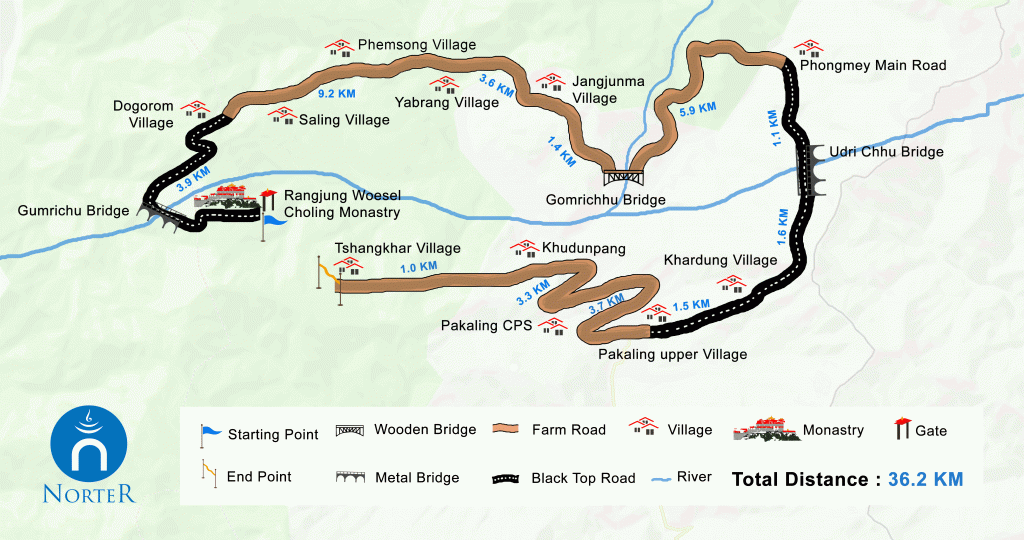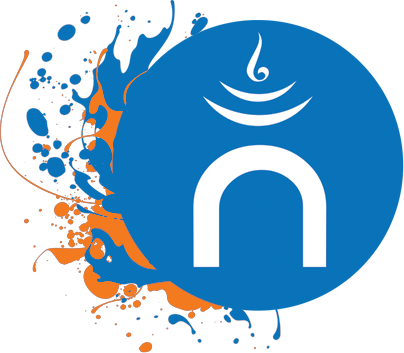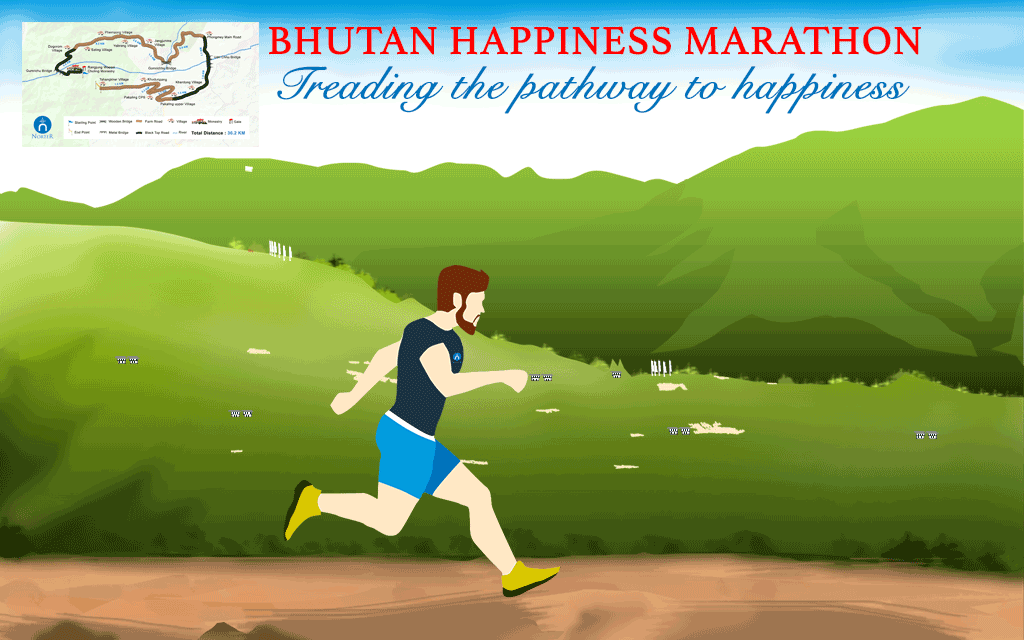BHUTAN is voted as one of the world’s top travel destinations and yet very few make it. And even the most seasoned travelers consider it a privilege to visit. You cannot find a more enlightened destination travel destination today. Perched high on the mighty Himalayan range, the Kingdom of Bhutan has defied globalization and chosen to remain a hidden paradise.
Bhutan is marked by raw natural beauty where the dense foliage changes dramatically as the sub tropical jungles at sea level merge into a fertile temperate zone and rises up to the great northern glaciers. The pristine environment is home to exotic wild life and is the last refuge for endangered species like the Black – Necked Crane, the Blue Sheep, the Golden Langur, the Takin and even the Royal Bengal Tiger.
The kingdom of Bhutan today remains as one of the last unventured destinations. And even today Bhutan does not have traffic lights.
Thus the carefully managed tourism policy of the government is based on ‘High value, Low impact’, which in essence means ‘take nothing but memories, and leave nothing but footprints’.
Within this beautiful Kingdom, lie the valleys of Radhi, Yabrang, Saling, Phongmey and Rangjung. The meandering rice dotted with lovely traditional houses greet everyone with a breathe of an awe.
Radhi has been popularly known as the rice bowl of eastern Bhutan and for its raw silk weaving.
Starting from 2020 Norter will be annually organizing “The Great Eastern Bhutan Marathon” on 21st February. We dedicate the event for commemorating the birth Anniversary of our fifth king.
The 1st Great East Marathon is one of its kind and it will traverse through the wonders of many stunning villages of Radhi, Yabrang, Saling, Phongmey and Rangjung. This Marathon is special and unique, as the runners will experience culture and nature at every bend of the trail.
The Norter Bhutan team welcomes you to make history by being part of this amazing Great East Marathon of Bhutan. Come, join us and make yourself proud and happy.

Marathon Route Description
The marathon route is mostly rural and approximately 50% on hard pack dirt and 50% on pavement.
The marathon will start on 21st February 2020 sharp at 8:00 AM. The elevation at the start line is 1150m. We recommend you wear warm clothing over your running clothing and bring any other personal items you might need. These will be transported for you back to the finish line. Do not bring any valuables to the start line.
From the start line runners will accent up to Dogorom villages. The route follows the beautiful view of Yeozel chholing monastery, Gamri chhu, rice paddies, forest, villages and Chortens. Route is mostly rural and farm road with some rocky and uneven surfaces and 50% on pavement. The terrain is flat to rolling with zigzag up and down hill sections and with an overall elevation loss of over 1000 feet.
After Dogorom will be passing through Saling village, Make sure you take a moment to enjoy the view! This is a very beautiful and typical farmhouse still exist with unique cultural.
Than ascent gradually up to Yabrang villages vai Phuensong villages and descent downhill with zigzag road passing through Jangjunma Village and run further down to Gomrichhu Bright.
From the Gomrichhu bright run uphill till Phongmey village and after Phongmey you will run 3.12km blacktop road with breath-taking views of amazing landscape vai Khardung Village and Upper Pakaling village than descend down through lower Pakaling village.
When you passing Lower Pakaling you will see most of the household women busy weaving the raw silk textile (Bura) until you reach to the final destination to Tshangkar villages.
Upon reaching the Tshangkhar you will taking winner price and will have celebration with villager with typical cultural show.
Aid stations are located approximately 2 – 3.5 miles (3.2 kms – 5.6 kms) apart. Aid stations will feature water, bananas and sports nutrition products. There will mile marker signs designating your current run distance, at each aid station.
All runners are encouraged
to carry a water bottle and any other necessary personal food supplements
between aid stations as needed. Aid stations are designed to provide aid to
those within the 6.5 hours cut off time.
Traffic will be open to
vehicles, but will be monitored by local police and transportation officers.
Most of this route is in rural Bhutan, so the quantity of vehicles on the road
is minimal.
Toilet facilities will be
set up at each aid station along the route.
Medical personnel will be
available at the finish line as well as roving on the course. There will be an
ambulance on standby.
Event information
Marathon: Friday, February 21, 2020, 8:00 AM
- Start line in the Rangjung Yeozerchholing Monastery ground
- Finish line Tshangkhar Naktsang
- International Registration Fee: US$ 200/-
- Runners must report at the Rangjung Yeozerchholing ground 6:30 AM
- Race starts at 8:00 AM
Norter Marathon Rules and Regulations
- Pre-race briefing in Tshangkhar Naktsang ground
- Transportation from the finish line at the Tshangkhar Naktsang to the start of the race
- Transport of any personal items from the start line to the finish line
- Technical running shirt with Norter logo
- Special gift for all finishers
- Special awards given to top competitors
- Awards Celebration with Traditional Entertainment
- Aid stations and medical support en-route
- There will be a raffle prize drawing at the Awards Ceremony with a chance for ALL participants to win prizes!
Thursday, 20 February 2020 – 09:00 AM – 2:30 PM.
Packet Pick Up and race check-in at Tshangkhar Naktsang. PLEASE BRING A
PICTURE ID TO CHECK IN. You will receive your race number at this time, which
will need to be pinned to the front of your running shirt.
Registration fee must paid in advance for all percipients.
Thursday,
20 February, 2020 – 2:30 PM.
Our mandatory pre-race briefing will
be right after Packet Pick Up on Thursday, 20 February 2020, at 2:30 PM,
also Tshangkhar Naktsang
Friday,
21 March 2020
Marathon runners must report at the RANGJUNG
YEOZERCHHOLING MONASTERY GROUND at 6:30AM
8:00 AM.
Marathon Race Start.
3:00PM. All
runners must reach at the Tshangkhar Naktsang
4:00 PM. Race
cutoff time at finish line.
5:00 PM.
Awards Celebration at Tshangkhar Naktsang.
Marathon
Cash Prize to top male and female marathon winner:
- 1st Male & Female: 1.5m Buddha painting thangka worth of USD1490(Each)
- 2nd Male & Female: 1.2m Guru Rimpochhe thangka worth of USD1249(Each)
- 3rd Male & Female: 1m Zhabdrung Rimpochhe thangka worth of USD1099(Each)
- 4th Male & Female: 2.5ft white Tara thangka worth of USD749(Each)
- 5th Male & Female: 2ft Drukpa Kuenly thangka worth of USD599(Each)
- Medals for all finishers at the finish line
- T-shirt for all Participants
ITINERARY
Day 01
Arrive Guwahati-S/Jongkhar 105KM 2/30HRS DRIVE
Arrive in Guwahati airport in Assam, India. Meet and take a drive to Samdrup Jongkhar, a frontier town in southeastern Bhutan. Along the way, you will pass through many small Assamese villages and tea gardens. Complete immigration formalities and enter Bhutan. In the evening stroll around the town to see the locals. Samdrup Jongkhar is a trading town for eastern Bhutan. Overnight at hotel
Day 02
S-Jongkhar-Tashigang – Radhi Tsangkhar Villages LUXURY CAMP 205KM 7/8HRS DRIVE
After an early breakfast, we will drive north to Trashigang. As the road ascends, we pass through a variety of vegetation zones in the Himalayan foothills. Looking back we should get a distant view of the Indian plains. The roadside is rich in plants including ferns, rhododendrons and primulas and we will pass though many small villages. If possible, we will stop in some of them, including a local weaving center in Khaling. Late in the afternoon, we will visit Trashigang Dzong which houses the monastic institute for monks and administrative center for the valley. Drive further to Radhi and overnight at Camp.
Day 03
Radhi Tshangkhar – explore around the villages
Highlight: Radhi is a well-known community in the east for the production of bura (raw silk) textiles and also known rice bowl of the East. Textile production has become a major income source for the people of Radhi, especially in the off-agricultural seasons. Around 200 households here are dependent upon bura weaving and all use the traditional back-strap loom.
Morning Explore Jonla villages and visit the Jonla temple, Radhi Namdrol chholing Monastery and Pakling temple and drive back for lunch. Afternoon walk around the villages and view women weaving beautifully patterned bura. They will even demonstrate the dying process involved in weaving raw silk. Visit the weaving centers developed for women coming from sections of the non-weaving community to improve their livelihood through provision of training and equipment.
Evening cultural show by villager. Overnight at camp.
Day 04
Marathon around the villages’ farm road
Day 05
Day excursion Merak and Sakten
Early morning drive to Merak is one of the most isolated valleys in Bhutan. Like the people of Sakteng, Merak people (Brokpas) are said to have migrated here few centuries ago from the Tshona region of southern Tibet. They arrived here after several months of journey across treacherous passes, set the shrubs on fire and settled down to make it their home called Merak, which literally means “Set on fire”. The inhabitants of Merak are similar to those of Sakteng in their language, dress, lifestyle and spiritual affiliation. However the people from Merak are said to be better built and taller than their counterparts in Sakteng. The houses are built of stones with very small windows and in most cases the houses are one storied only. In Merak the custom of polyandry is practiced, with brothers sharing the same wife. overnight at campingSakten
Early morning drive to Sakten village, where we spend one day to rest and explore the valley. Sakten is a large village of about 200 households at an altitude of 2950m, surrounded by mountains on all sides. Sakteng literally means bamboo field. The inhabitants of Sakteng are similar to those of Merak in their language, dress, lifestyle and spiritual afflictions. It comprises of around 200 households with three main villages, Sakteng, Tengma and Borang Tse but generally known as Sakteng, and the people are known as Saktengpa. Every winter, Brokpas take on drukkor or grain journey to the lowland village, where they have their regular host family, with whom they have close trading and social relationship. They live together as one family for weeks and barter their Yak products with maize and grains. Drive back to camp.
Day 06
DRIVE TO S/JONGKHAR
Day 07
DRIVE TO GUAHATI – FLY OUT
OPTION 2
ITINERARY OVERVIEW
DAY 01: ARRIVE TO PARO AIRPORT
DAY 02: PARO – YONPHULA -TRASHIGANG-RADHI TSHANGKHAR
DAY 03: RADHI TSHANGKHAR
DAY 04: MAROTHON DAY
DAY 05: DAY EXCRUSION TO MERAK – SAKTEN
DAY 06: DRIVE TO YONGPHULA AIRPORT – FLY TO PARO
DAY 07: PARO – FLY OUT

